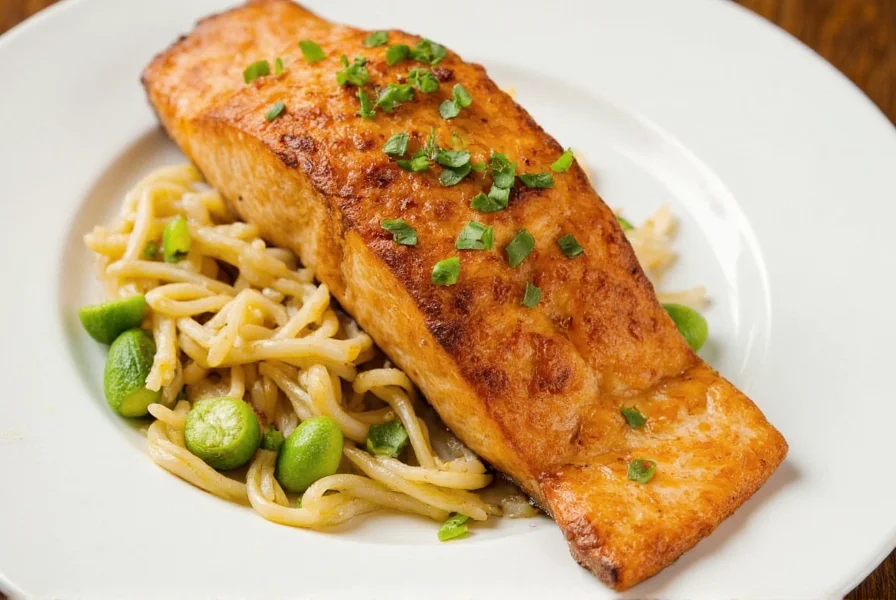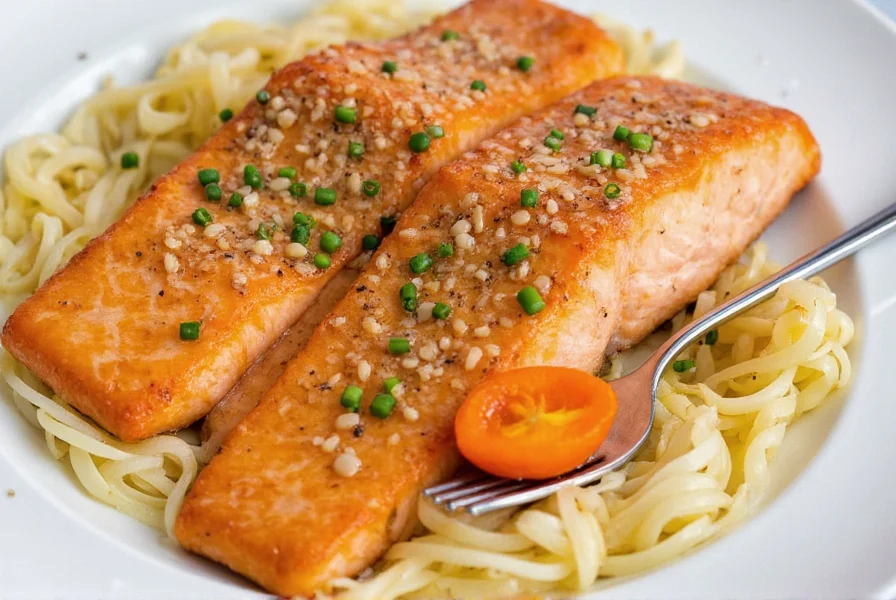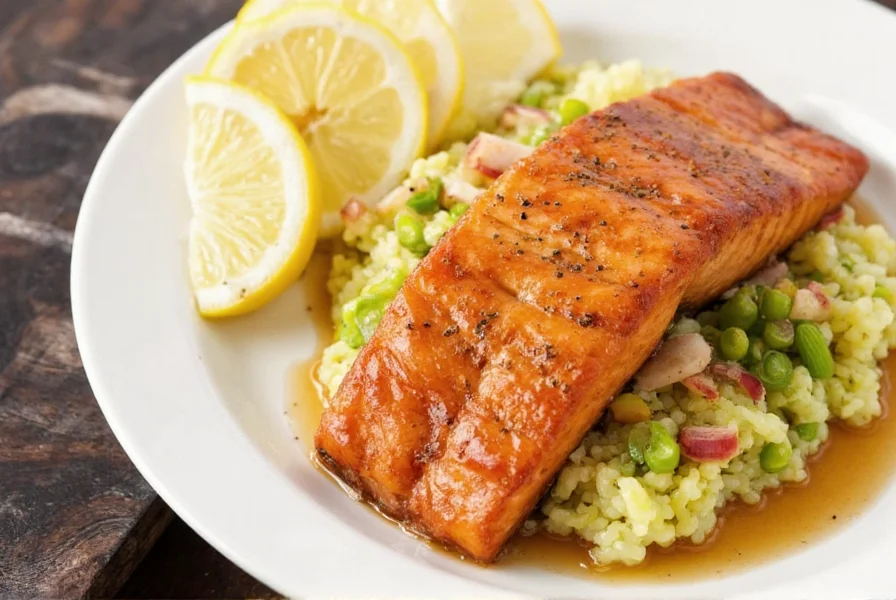Creating exceptional ginger salmon starts with understanding the synergy between these two ingredients. Fresh salmon's rich, buttery flavor pairs beautifully with ginger's bright, slightly spicy warmth. This combination has been perfected in Asian cuisine for centuries and has become a staple in healthy home cooking worldwide.
The Science Behind Ginger and Salmon Pairing
Ginger contains gingerol, a bioactive compound that complements the fatty acids in salmon. This pairing isn't just delicious—it's scientifically sound. The pungent compounds in ginger cut through the richness of salmon's natural oils, creating a balanced flavor profile that feels light despite the fish's richness. Professional chefs note that ginger's acidity helps tenderize the salmon while enhancing its natural sweetness.
Essential Ingredients for Perfect Ginger Salmon
The foundation of an outstanding ginger salmon dish rests on quality ingredients. For the best results when preparing ginger salmon at home, focus on these key components:
| Ingredient | Why It Matters | Recommended Quantity |
|---|---|---|
| Fresh salmon fillet | Wild-caught provides better texture and flavor | 6-8 oz per serving |
| Fresh ginger root | Superior flavor to powdered ginger; contains active enzymes | 1-2 tablespoons grated |
| Low-sodium soy sauce | Provides umami without overwhelming saltiness | 2 tablespoons |
| Garlic | Complements ginger's warmth with savory depth | 2 cloves, minced |
| Honey or maple syrup | Counteracts ginger's heat and creates caramelization | 1 tablespoon |

Step-by-Step Ginger Salmon Preparation
Follow these professional techniques for restaurant-quality ginger salmon at home:
- Prepare the marinade: Combine 2 tablespoons soy sauce, 1-2 tablespoons freshly grated ginger, 2 minced garlic cloves, 1 tablespoon honey, 1 tablespoon olive oil, and a squeeze of fresh lime juice.
- Marinate the salmon: Place salmon skin-side down in a shallow dish, pour marinade over fish, and refrigerate for 15-30 minutes (no longer, as the acid will start to 'cook' the fish).
- Preheat your cooking surface: For pan-searing, heat a skillet over medium-high heat until a drop of water sizzles on contact.
- Cook skin-side down first: Place salmon skin-side down in the hot pan. Cook for 6-8 minutes until skin is crispy.
- Flip and finish: Turn salmon and cook for an additional 3-5 minutes until internal temperature reaches 125°F for medium-rare or 135°F for medium.
- Rest before serving: Let salmon rest for 5 minutes to allow juices to redistribute.
Cooking Method Comparison
Different cooking techniques yield distinct results when preparing ginger salmon:
- Pan-searing: Creates a beautiful crispy skin and caramelized exterior while keeping the interior moist. Ideal for how to cook ginger salmon perfectly with restaurant-quality results.
- Baking: More hands-off approach; bake at 400°F for 12-15 minutes. Best for easy ginger soy salmon for beginners who want consistent results.
- Grilling: Adds smoky notes that complement the ginger. Use a fish basket to prevent sticking. Perfect for summer ginger salmon recipes.
- Broiling: Quick method that creates a flavorful crust; watch carefully to prevent burning the ginger glazed salmon.
Avoiding Common Ginger Salmon Mistakes
Even experienced cooks make these errors when preparing ginger salmon:
- Using old ginger: Fresh ginger should be firm and smooth. Wrinkled ginger indicates age and diminished flavor.
- Over-marinating: More than 30 minutes in an acidic marinade can make salmon mushy.
- Cooking at wrong temperature: Too hot causes burning; too low prevents proper searing. Maintain medium-high heat for pan seared ginger salmon without burning.
- Not patting salmon dry: Moisture prevents proper searing. Always dry salmon thoroughly before cooking.
- Skipping the rest period: Cutting into salmon immediately causes juices to escape, resulting in dry fish.
Serving Suggestions and Pairings
Ginger salmon's versatility makes it suitable for various meal contexts. For a complete healthy ginger glazed salmon preparation, consider these pairings:
- With grains: Jasmine rice, quinoa, or forbidden black rice absorb the flavorful sauce beautifully
- With vegetables: Steamed broccoli, roasted asparagus, or stir-fried bok choy complement the ginger notes
- With salads: A simple cucumber salad or mixed greens with citrus dressing balances the richness
- Sauce enhancements: Add a squeeze of fresh lime or a sprinkle of sesame seeds before serving

Storage and Reheating Guidelines
Proper storage maintains the quality of your ginger salmon:
- Refrigeration: Store in an airtight container for up to 2 days
- Reheating: Gently warm in a 275°F oven for 10-15 minutes or use a skillet over low heat with a splash of water
- Avoid microwaving: This often results in rubbery texture and uneven heating
- Freezing: Not recommended as salmon texture deteriorates after thawing
Variations for Dietary Needs
Adapt this best ginger salmon recipe for weeknight dinner to accommodate various dietary requirements:
- Gluten-free: Substitute tamari for soy sauce
- Sugar-free: Replace honey with a sugar-free sweetener or omit entirely
- Low-sodium: Use reduced-sodium soy sauce or coconut aminos
- Vegan option: Apply the same marinade to firm tofu or king oyster mushrooms
Frequently Asked Questions
What's the ideal internal temperature for cooked ginger salmon?
The ideal internal temperature for ginger salmon is 125°F for medium-rare (slightly translucent center) or 135°F for medium (opaque throughout but still moist). Use an instant-read thermometer inserted into the thickest part of the fillet for accuracy. Remember that salmon continues cooking after removal from heat due to residual heat.
Can I use ground ginger instead of fresh in my salmon recipe?
While fresh ginger is strongly preferred for ginger salmon recipes, you can substitute ground ginger in a pinch. Use 1/4 teaspoon of ground ginger for every tablespoon of fresh grated ginger. Note that the flavor profile will be less bright and complex, as fresh ginger contains volatile compounds that dried ginger lacks. For the best ginger salmon recipe for weeknight dinner, fresh ginger makes a noticeable difference in flavor quality.
How long should I marinate salmon with ginger before cooking?
For optimal results with ginger salmon, marinate for 15-30 minutes in the refrigerator. Longer marination (over 1 hour) can cause the acid in the marinade to break down the salmon's proteins, resulting in a mushy texture. The ginger's enzymes work quickly, so even 15 minutes provides excellent flavor penetration for your healthy ginger glazed salmon preparation.
Why does my ginger salmon always stick to the pan?
Ginger salmon sticks to pans primarily for three reasons: the pan isn't hot enough before adding the fish, the salmon wasn't properly dried before cooking, or you're trying to move it too soon. For perfect pan seared ginger salmon without burning, ensure your skillet is properly preheated (a drop of water should sizzle immediately), thoroughly pat the salmon dry with paper towels, and resist moving the fish until it naturally releases from the pan (usually after 3-4 minutes of cooking).











 浙公网安备
33010002000092号
浙公网安备
33010002000092号 浙B2-20120091-4
浙B2-20120091-4